Porto on a Plate: A Gourmand’s Guide to Portugal’s Second City
This website uses affiliate links which may earn a commission at no additional cost to you. As an Amazon Associate I earn from qualifying purchases.
Updated: 26th July 2023
What do tripe, the world’s most beautiful McDonald’s and a heart-attack-on-a-plate sandwich have in common? They’re all (somewhat) serious players on Porto’s gastronomic circuit. But, as of last month, a Michelin Guide milestone was added to the menu, with the epicurean experts hosting their first-ever provincial celebration of Portugal’s culinary scene in the country’s second city.
Perhaps, though, with an ingredient list like that, you’re wondering why the tyre-turned-taste-testers decided that 2024 will be the year to launch a dedicated guide to Portugal’s gastronomy. Well, you wouldn’t be alone; like many who visit Portugal, the nation’s dishes and laid-back dining style can lead to misunderstanding.
Affordable is often confused with cheap, simple is repeatedly mistaken for boring, and freshly caught seafood is often shirked in favour of Portugal’s beloved bacalhau, even though cod doesn’t even hail from the country’s near-endless waters. Then, of course, the international reputation of the Pastel de Nata more than overshadows any regional plates.

But for those in the know, this is one of Europe’s best food destinations, and the new Michelin recognition of the ever-evolving restaurant scene comes as no shock; they were exalting the nation’s up-and-coming chefs, sustainable practices, and traditional treats long before Portugal became Europe’s new corner of cool.
And while the south shouts loudly about its seafood and cataplanas, and Lisbon lauds over its constant new openings – many of which seem solely to target tourists these days – Porto and the North have kept producing what they always have: consistently great dishes, creative chefs, and quality-led produce – and that’s before we even start talking about those award-winning wines from the nearby Douro Valley.
So, if you’re keen to take a bite of everything piled on Northern Portugal’s provincial table – from traditional staples (read stomach and sardines) to titular tipples and (arguably) the world’s best seafood – here’s a Porto food guide covering which restaurants to reserve and where to stay, plus what to eat, experience and sip, to have the ultimate foodie trip during a long weekend in Porto and the Douro Valley.

Degustation-friendly digs: Where foodies should stay in Porto
First things first (after getting to Porto, of course), it’s time to check in. But where should an epicurean base themselves for a self-guided Porto food tour?
Panoramic plates: The Yeatman Hotel
If you want to slumber in the shadow of a Michel star-awarded kitchen, you’ve got two choices of deluxe digs. Most central is The Yeatman Hotel, which – thanks to its position in neighbouring Gaia (home to the historic Port lodges) rather than Porto proper – brags cityscape and river vistas that rival Chef Ricardo’s Costas creations in the kitchen. Thankfully, you don’t need to stay here to enjoy the two Michelin-star experience, but for those swoon-worthy views from the pool and luxurious rooms, you’ll have to check-in.
Cuisine on the coast: Vila Foz Hotel & Spa
Second up is the coastal Vila Foz Hotel & Spa in the laid-back yet upscale suburb of Foz do Douro. Ocean-facing, the renovated 19th-century palace serves up understated luxury, blending original features with Nina Andrade Silva’s bold design choices – especially in the contemporary annexe where her mark is left the loudest. With two restaurants led by Arnaldo Azevedo (one Michelin Star), and a tucked-away underground spa for privacy, this is a true bolthole far from the heavy footfall downtown. It’s a gorgeous hotel, but if I stay again, I’ll try to get one of the old palace suites or an upper-floor room in the modern part, as they have better sea views.

Kitchen in Training: The Editory Artist
If you want culinary quarters with a slightly more wallet-friendly price tag, The Editory Artist Porto Hotel & Bistro is an intriguing concept. Part hotel, part culinary school, it’s a slightly more affordable accommodation option in amongst Porto’s food scene.
Vineyard stays: Quinta do Ventozelo
Or perhaps you’d prefer to base yourself in the Douro Valley instead and opt for a more tranquil break with day visits to Porto? In that case, I highly recommend Quinta do Ventozelo. The gorgeous views across the stacked vineyard terraces from the pool, the fresh-from-the-farm dishes, and the well-renovated farmhouse-style rooms all make this a standout in the region.
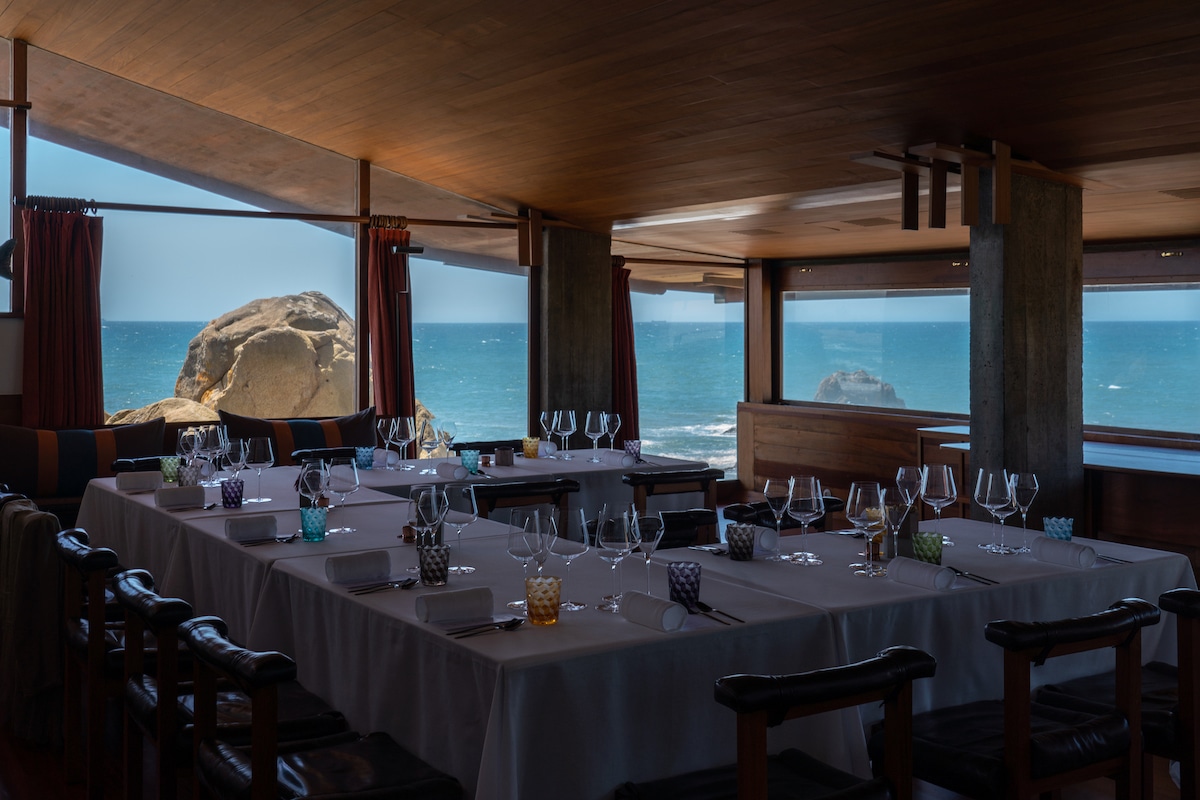
Michelin moments: Porto’s best restaurants and chefs
With seven Michelin star-awarded Portuguese restaurants (including two kitchens bragging two stars) and six Bib Gourmand designated restaurants, Porto’s food scene punches above its weight compared to the city’s relatively compact size.
These are reservations well worth making in advance of your trip. And while some of the experiences are much more laid-back than others, they all have one thing in common: passionate and creative chefs who are much more focused on the plates than being pretentious. Seafood is also a big focus in Porto, with the bounty of the Atlantic always freshly caught. Having lived in the south for years, I’d assumed we had the best seafood in the Algarve, but after numerous visits to Porto, I think I can now agree with acclaimed Chef Rui Paula’s claim that “Portuguese fish is the best in the world” no matter where in the country you are – and Porto’s food scene might just have the best of it.
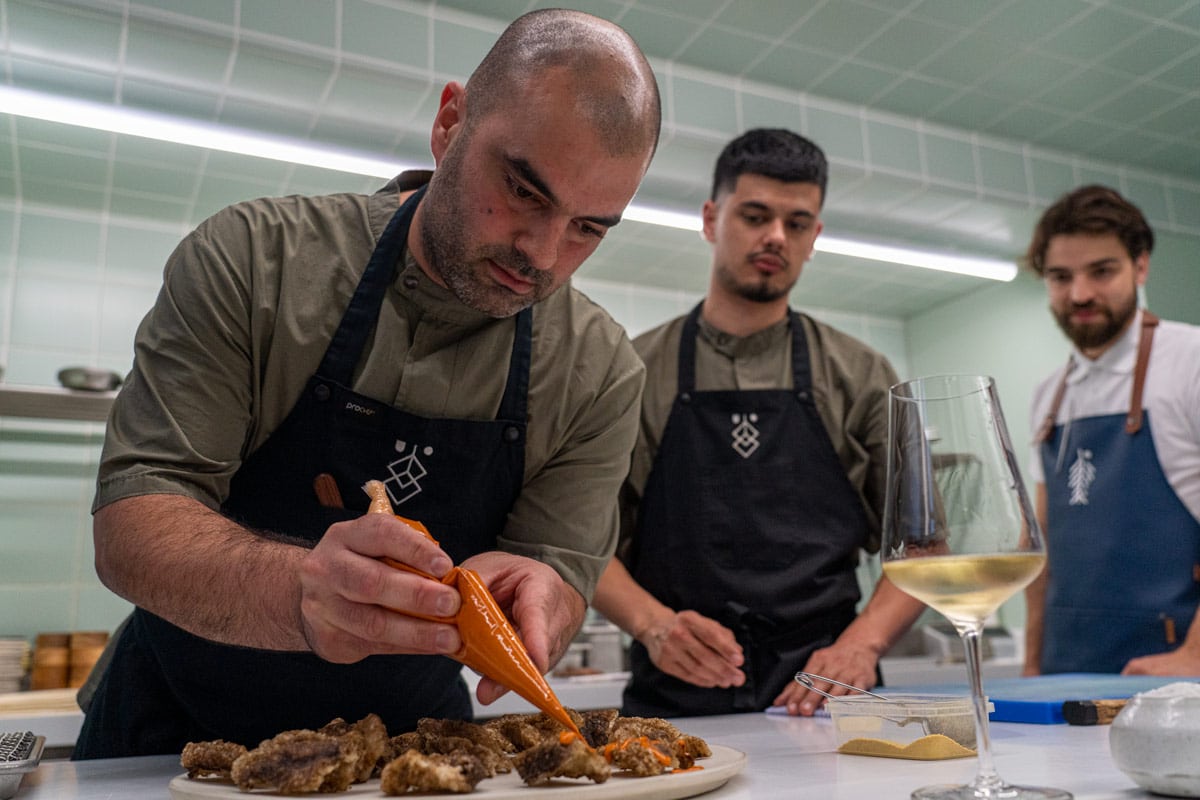
Vasco Coelho Santos’ Euskalduna Studio
One of the most exciting and no longer up-and-come chefs in Porto is Vasco Coelho Santos, who operates three restaurants, a bakery, and a fishmonger, the latter being used to source and prepare all the quality seafood used in his restaurants. Having trained in San Sebastian and the Basque Country’s finest establishments and won various rising-star awards, the chef now enjoys a revered status in Porto. His passion for sustainability and sourcing the best quality seafood is particularly impressive, including his work at CIIMAR, a seafood and scientific research centre (ironically) housed in Porto’s cruise terminal.
The stand-out of his trio of restaurants is Euskalduna Studio (one Michelin Star), near Bolhão. A small and intimate space, the majority of seats are at the chef’s table, with a prime view of the kitchen staff and Vasco Coelho Santos himself, preparing a ten-moment menu which focuses on small producers and the highest quality of seafood. He prefers this more intimate and communal dining approach as it pays homage to the traditional countertop dining bars that are staples across Porto and allows for the chance to discuss the dishes and choice of fish with us as diners.
If you’re unable to secure a reservation at Euskalduna Studio, then his two other restaurants, Semea, with its riverside terrace views, and Seixo, inland on the Douro River, are far from consolation prizes. Santos’ informed me that often when dishes are retired from Euskalduna Studio, they make their way onto the menus here. In fact, all of the Michelin chefs I have spotlighted here have secondary restaurants – mainly in the Douro Valley – which I will discuss in a little more detail further down.
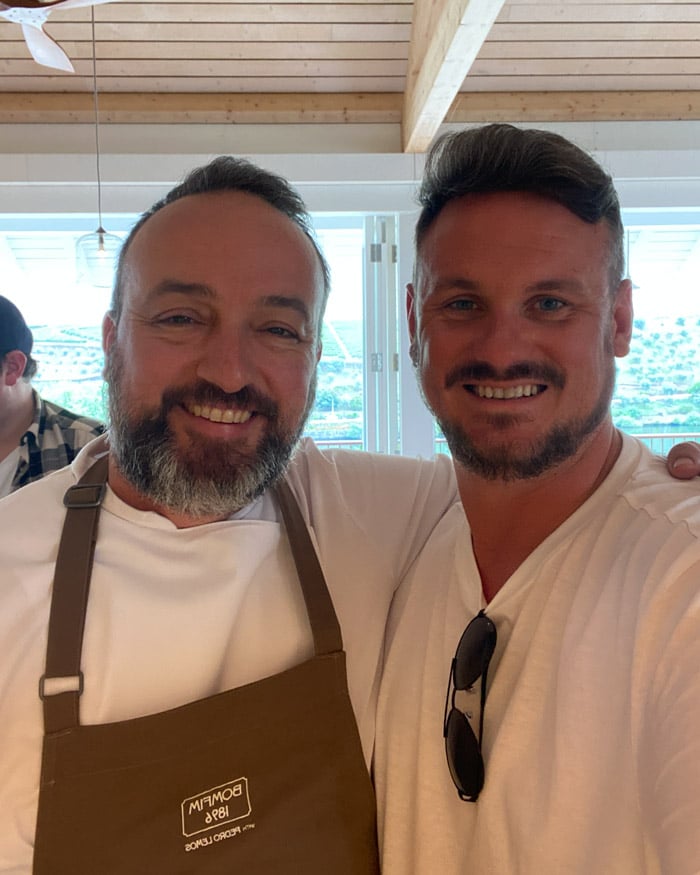
Pedro Lemos’ self-titled restaurant
One of the most established chefs in Porto is Pedro Lemos; he actually played a part in training Vasco Coelho Santos in his younger years. The chef’s restaurant (one Michelin Star), which operates under his own name, is tucked away in an unassuming side street in the upscale Foz do Douro district, where Porto meets the Atlantic Ocean.
While I haven’t had the chance to dine here myself, I have eaten at one of Pedro Lemos’ other restaurants (Bomfim 1896 in the Douro Valley), where every mouthful was as delectable as you can imagine. Having met the chef at a couple of events, too, I can tell you this is a chef who is as personable as he is a perfectionist in the kitchen.
In operation since 2009 and with a star since 2014, this was the first restaurant in Porto to receive a Michelin star (The Yeatman Hotel received theirs in 2011, but the other side of the river is actually a different city: Vila Nova de Gaia).
With a terrace and wine cellar that doubles as a dining room, the small house has plenty of intimate pockets to enjoy the six or eight-course tasting menus from, including a vegetarian option for those looking for fine dining in Porto but without meat or fish.

Rui Paula’s Casa do Boa Cho Nova
Another stalwart on Porto’s food scene is Chef Rui Paula, best known for the breathtaking setting that is Casa do Boa Cho Nova (two Michelin Stars) in Matosinhos, a metro ride from downtown. I’ve had the pleasure of meeting and interviewing the chef a couple of times, and when I finally sat down to eat in this restaurant, with the Atlantic Ocean spilling out before me, I felt like I was dining with an old friend. For a chef who is so focused on crafting his dishes from memories, it’s unsurprising that a meal here is such an unforgettable experience.
For this one, however, I’d suggest making a lunch reservation or an evening choice if coming to visit Porto during the longer summer days. The food is, of course, excellent. But the views from this former wooden-clad tea house, now a National Monument, are sublime thanks to the position basically sunk into the ocean-facing rocks.
The menu, as you’d expect with such a setting, is heavily focused on seafood, with Rui Paula or his senior chefs often adding the finishing touches at the table. The staff are laid-back and now intrusive while being exceptionally knowledgeable on the wine list, and the whole experience is so delightful it is perhaps the standout dining moment I’ve had in Portugal.
Menus are both a la carte or elaborate small dish-tasting menus ranging from six to twenty one courses, and each morsel is as delicious as the last.
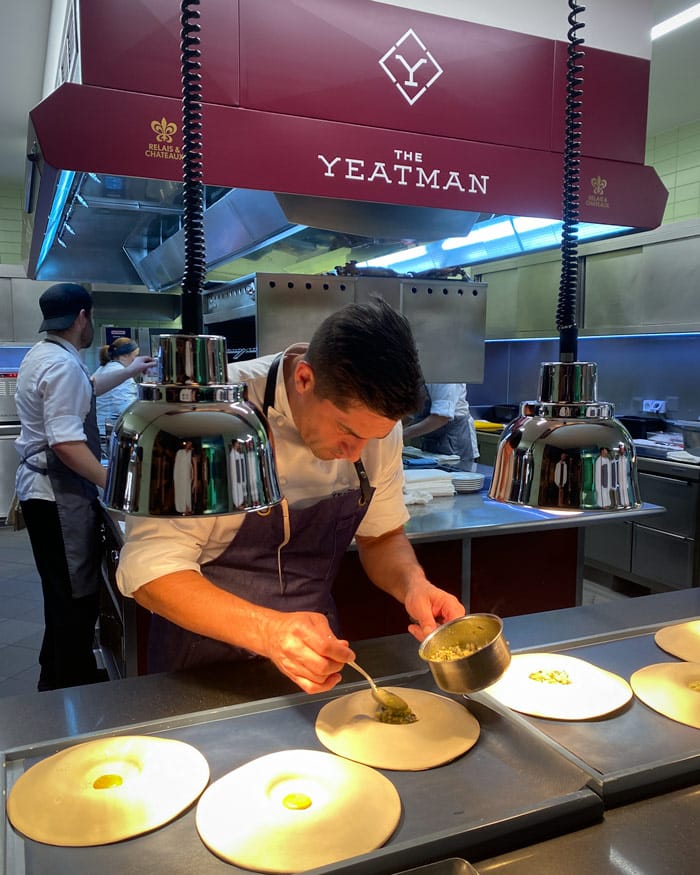
Ricardo Costa’s Gastronomic Experience
Sitting in the kitchen of The Yeatman’s Executive Chef Ricardo Costa, awaiting the fourth course of the meal, was a surreal experience for me. This is a culinarian I have religiously watched on TV as a MasterChef Portugal presenter and judge, so to be in the presence of – and talking to – such a famous face in Portuguese cuisine was rather special. This is just one of the ‘experiences’ that all diners will have when eating in this grand dining room, and it brings a very welcome ‘behind the scenes’ look at the world of Michelin dining.
Set across the Douro River in Vila Nova de Gaia, the Gastronomic Experience (two Michelin Stars) is housed inside the equally incredible Yeatman Hotel. One of the most luxurious properties in the country, the views of Porto, especially at sunset, are mesmerising, and arriving early to enjoy a glass of sparkling Espumante (Portugal’s bubbly wine) on the terraces is a must.
Once sat inside the elegant dining room, with frescoes above and wide traditional windows framing the panorama of Portugal’s second city, you’ll enjoy an imaginative seasonal tasting menu of varying courses. Fish plays a big part in Ricardo Costa’s creations, with meat and ingenious vegetarian dishes (I don’t think I’ll ever taste a tomato salad of the same jaw-dropping quality again), adding plenty of contrasting layers to the evening. There is also a private dining room with expansive windows, allowing for a prime view with plated-up perfection.
If you’re unable to secure a reservation, or the price point is a little too high, I was also very impressed with his new venture – Mira Mira by Ricardo Costa – in the WOW complex below, where the views and dishes are shaping up to be true rivals to the ‘big brother’ upstairs.
Traditional and tinned: Sardines and Porto’s typical dishes
But of course, Portugal isn’t only a place of fine dining and first-class chefs. This is a country where tradition is seen as timeless, and affordable meals with friends and loved ones are treasured. As such, no food guide to Porto would be complete without championing the old-school approaches and flavours which started to put Portugal on the map in the first place.
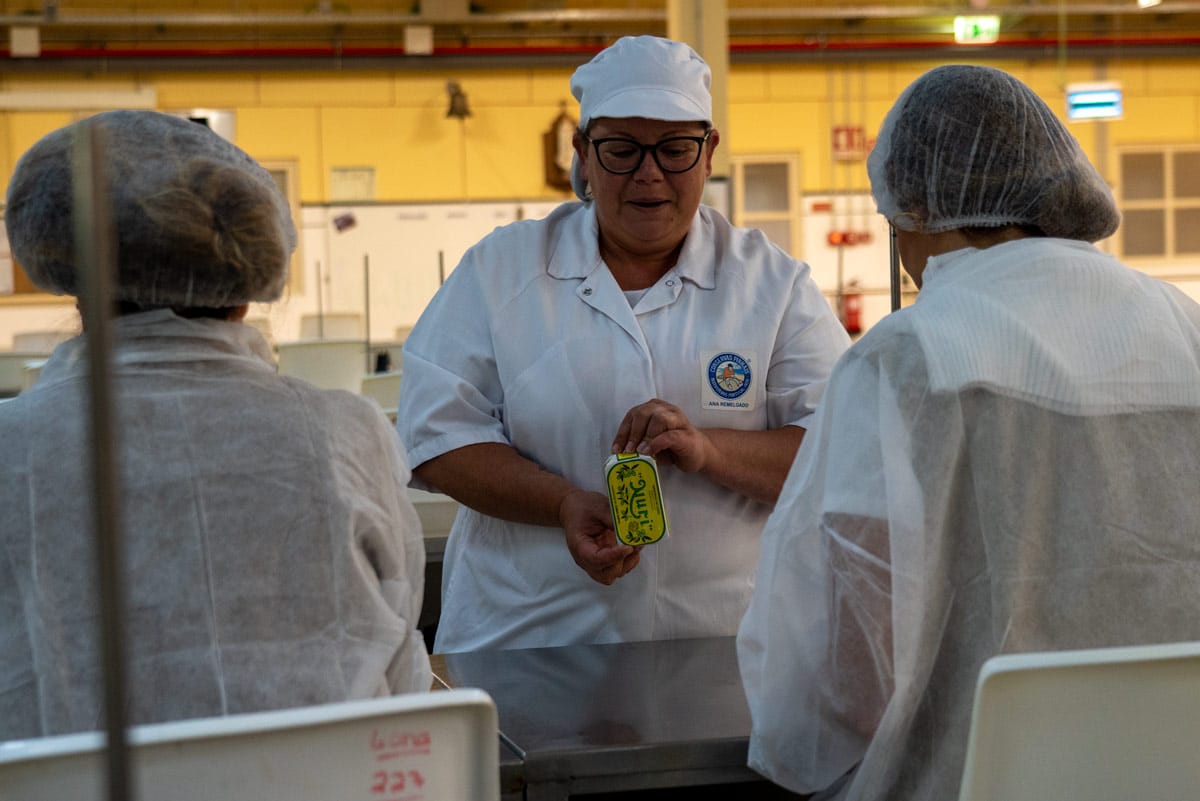
Tinned Sardines at Conservas Pinhais
Perhaps the most typical of all Portugal’s produce are sardines, especially those found in tins. And while for many of us, tinned produce is often deemed inferior to fresh, Portugal proves that expectation can be far removed from reality.
Of course, you can order tinned sardines (and also the likes of clams or octopus) in many shops and even restaurants as you enjoy the Porto food scene, but to get a taste of the real deal – and how much work goes into preparing these little pouches of goodness, you’ll want to venture to one of the oldest factories in the country, Conservas Pinhais, which is in the Matosinhos district.
On a guided tour of this historic factory, which has been in operation since 1920, you’ll see the sardine story from the early days until now. What hasn’t really changed is the method of sourcing and preparing the product, and long-term staff such as Marta will not just explain how the products are prepared but also show you – especially if you visit during the weekday work hours when everything is in full swing.
As well as having the chance to tour the factory, you’ll be able to tin and label your own souvenir tin to take home before sampling some of their top brands (Nuri) in the adjacent tasting room.
Bacalhau, the nation’s beloved salted cod
No trip to Portugal is complete without trying at least one of the countless ways to prepare Bacalhau, the salted codfish that is so beloved by the Portuguese that it’s a Christmas tradition.
But this is a peculiar fish to have become one of the country’s most treasured, as cod isn’t even found in the Atlantic waters around the country. For nearly 500 years, it’s been a go-to when the fish was first brought back from Newfoundland in Canada – hence why it was always salted for preservation. Nowadays, the cod is more likely to have come from Norway, so while it’s always delicious and typical, it’s certainly not fresh or local.
Still, you should absolutely try the dish when you’re discovering Porto’s food scene, and the city has a couple of its own signature recipes, which differ from the more national offerings – although, for me, grilled or baked simply with olive oil is best. These include Bacalhau à Zé do Pipo (boiled with milk and mashed potatoes) and Bacalhau à Gomes de Sá (with eggs and potatoes).

Porto’s famed Francesinha
A staple on any Porto food guide is the Francesinha, a meat-heavy, gravy-soaked sandwich which was inspired by France’s Croque Monsieur. While on paper, it might sound a little heavy and intense – and indeed, in some restaurants, it is a bit too much – when done right, this filling sandwich is actually delicious and rather refined.
The story of how this dish became a regular feature across the city dates back to 1952 when restauranter António Passo travelled to France and met bartender Daniel David da Silva. Returning with Passo to Porto, the sandwich was created in homage to those served in France, albeit a much more filling version, and Passo’s restaurant was reborn. No longer was it just serving fancy food to wealthy residents of Porto, but now affordable dishes, such as the Francesinha, to all.
My favourite place to try the dish is in the restaurant of its invention, A Regaleira. While it has moved a few doors down from its original location in the city centre, it’s very much served to the original recipe, and I enjoy this version because it’s not as overstuffed as in other restaurants. Another popular location to try the dish is Café Santiago.
Tripas à Moda do Porto, a storied dish of seafaring
Another dish you’ll find in nearly every Porto food guide is Tripas à Moda do Porto, which is mainly served in local restaurants or as a speciality. Also hailing from Portugal’s seafaring days, the story goes that when Prince Henry the Navigator requested food for the sailors during the “Age of Discovery”, Porto sent all its best cuts, leaving the residents with stomachs and intestines, which were then cooked up with white beans to create this simple and affordable dish.
If you’ve seen the late Anthony Bourdain’s show in Porto, you’ll have seen him try this dish at A Cozinha do Martinho, a traditional restaurant which many visitors to Porto will still detour to so that they too can follow in the footsteps of the legendary chef to try this Porto dish. A curious fact is this is how the citizens of Porto gained their nickname as tripeiros, which translates as tripe eaters.
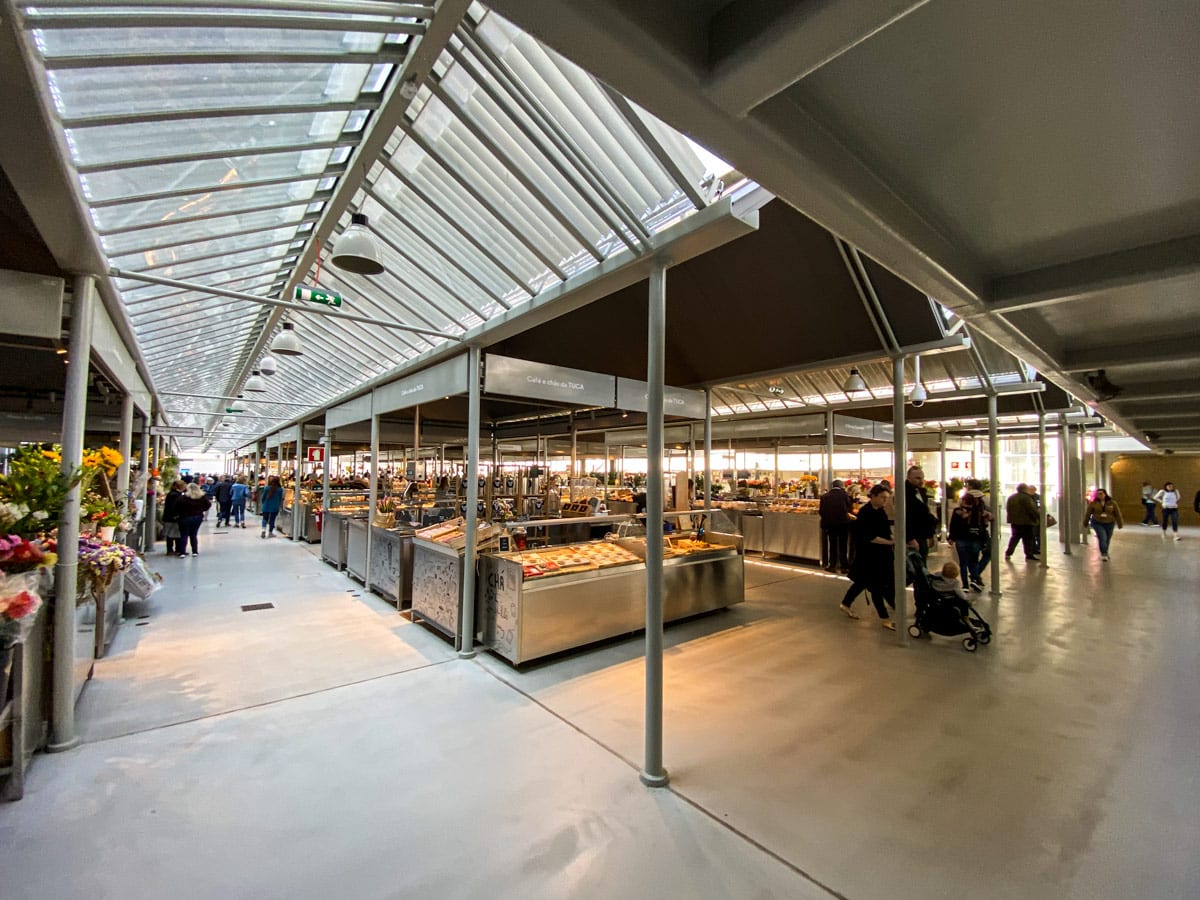
Mingling at the markets: Fresh produce and food stalls
There’s no better pleasure in Portugal than poking around the country’s markets. From the tiny village offerings of weekly fresh produce to the loud and early-morning seafood sellers on the coast, you’ll see some of Portugal’s personality in these timeless spaces.
Most Porto food guides will direct you to Mercado do Bolhão, a hulking space inside a heritage building which recently reopened following a huge renovation project. It’s beautiful, right in the city’s heart, and offers everything from cheese and tinned fish tastings to local products such as salt, honey and wine. While it might be a bit touristy, it’s absolutely still worth a visit. My recommendation? Purchase a glass of Douro wine or Port from one of the bars on the edge and stroll between the stalls while sipping – it’s a great way to pick up some souvenirs while keeping refreshed.
Another market in Porto worth visiting is Mercado Bom Sucesso, and as this is slightly further out, it’s much more frequented by citizens of Porto rather than visitors. Still, it is much more of a modern food court these days than a traditional market, and here you’ll find a mixture of restaurants and stalls selling traditional Portuguese food and some international dishes.
If you want the truly traditional fresh produce style market, your best bet is to start early and head to the fish market at Mercado Matosinhos, further out from the centre.
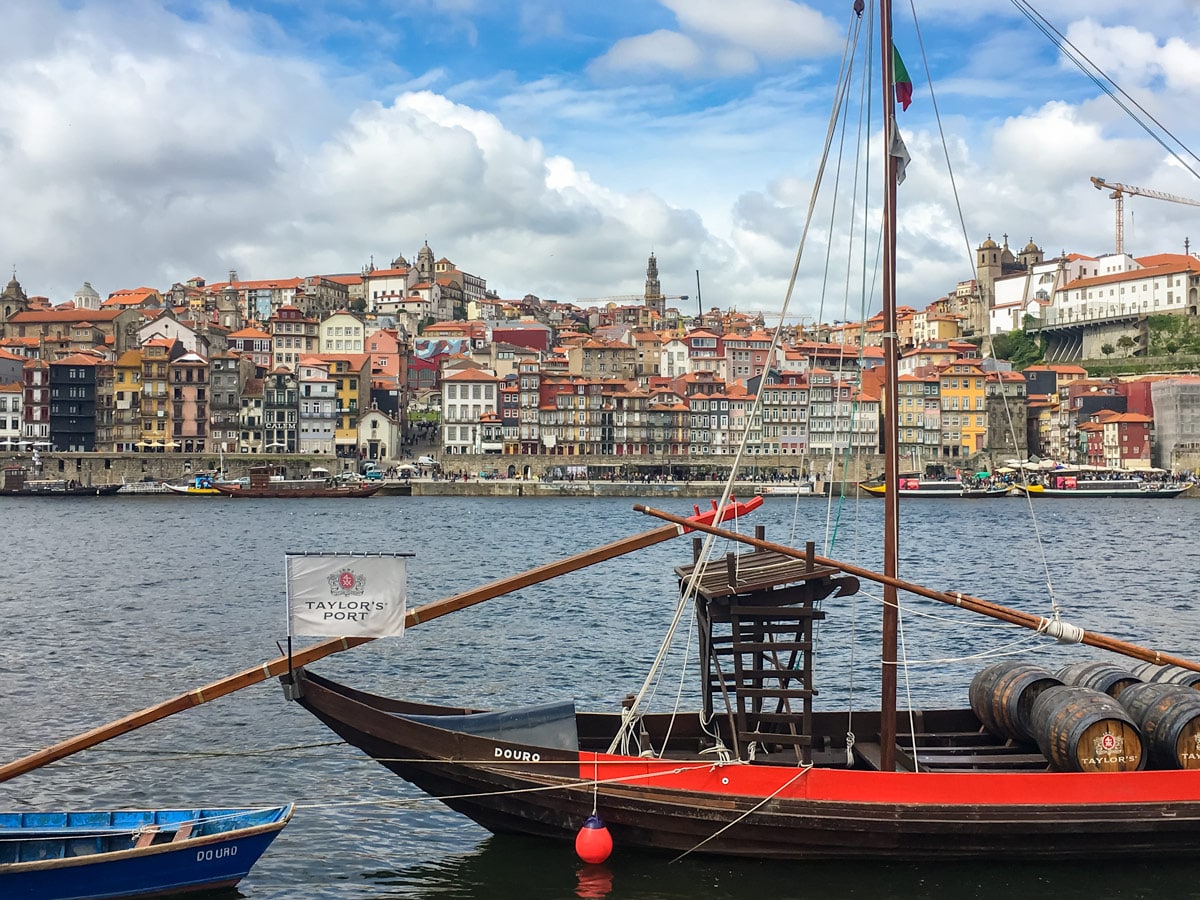
Titular tipples: Port tasting in Porto
Named after the city, Port is perhaps one of Porto’s – and indeed Portugal’s – most famous exports, and no Porto food guide would be complete without at least one tasting in a traditional Port lodge.
To do this, you’ll need to take a boat or walk across the Dom Luís I Bridge to Vila Nova de Gaia, the city (which most people confuse for a district) that sits across the Douro River from Porto.
For centuries, traditional wooden Rabelo boats have transported the barrels of Poro wine from upstream, where the grapes are harvested and processed, to these historic lodges, where they are left to rest and age before being bottled. Since then, the sweet fortified dessert wine – which was traditionally red but can now be enjoyed as white or rosé – has become famous around the world, but tasting it here is something special entirely. Skip the riverbank bars (or enjoy them too) and head inside one of the storied lodges back from the river where the bottles are still stored.
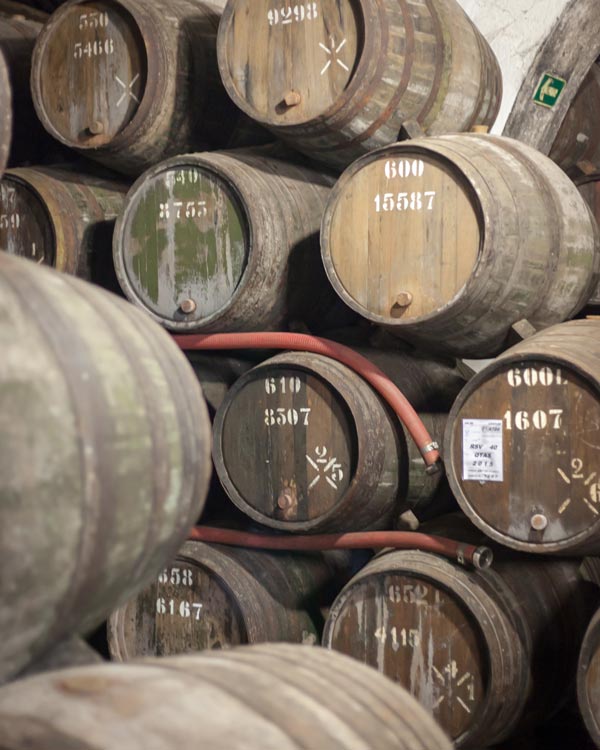
Sadly, my favourite to recommend to tour (Croft) was knocked down to make way for the new World of Wine cultural complex, but there are plenty more places to choose from. If you want to join a guided tour or an in-depth guided tasting at a particular time, it’s best to book in advance, although, in many of the Port houses, you can walk up and join a tour with a small tasting in the bar area afterwards.
Most tours follow a similar structure, where you’ll be explained the history of that particular producer, the kind of Ports they offer – such as Ruby, Tawny, Vintage etc. – and be guided through the storage rooms where toneis and barricas (vats and barrels) are stacked high. Some may offer samplings straight from the oak vessels, while others have bars. Some of the oldest and most respected tours include Cockburns, Cálem, Taylor’s and Graham’s – you’ll want to check their websites to find the tour that best suits the kind of experience and duration you want to enjoy.
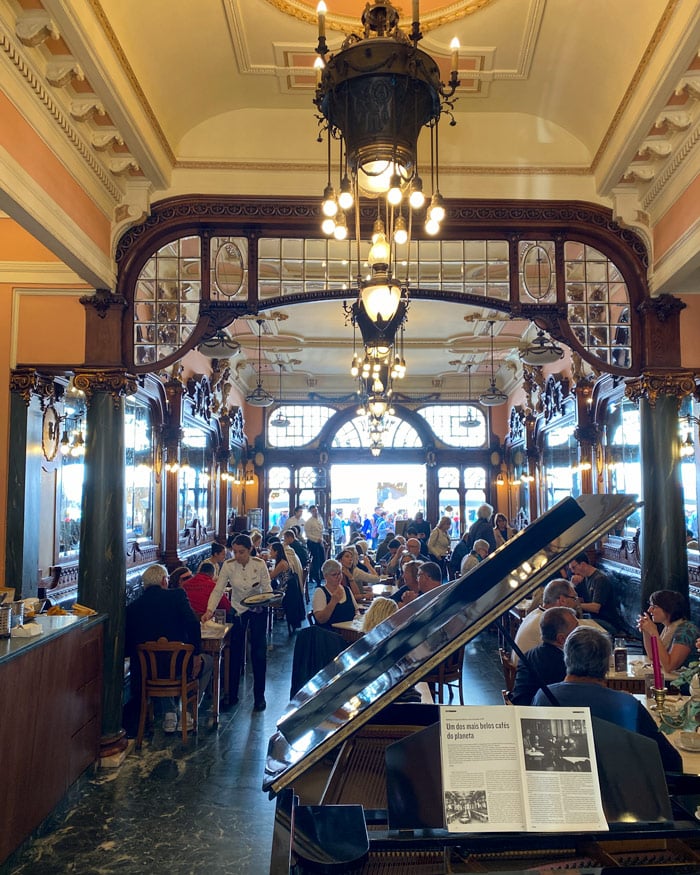
Coffee, craft beer and cervejarias: Where to drink and eat in Porto
But Porto isn’t a city that just lives in the past, and there are plenty of other drinks to enjoy around the city. From exciting new breweries breathing life into a beer scene where Sagres and Super Bock have long ruled supreme to coffee roosters which are starting to put the city on the map, a Porto food guide isn’t complete with looking at where and what else to drink in the country’s ever-evolving second city.
Coffee roasters and shops in Porto
Coffee in Portugal is almost a religion, and nothing pains me more than seeing tourists grabbing a takeaway coffee and rushing around the city. Sipping an espresso at a bar or on a terrace while people-watching is one of the best – and most affordable – joys of this country. An espresso (called a cimbalino in Porto, rather than a bica as in Lisbon) in a local place should cost between €0.70 – €1, making it a quick and easy drink to enjoy while pausing between sightseeing. But if you want your caffeine fix with an upgrade, you have a few choices.
The most famous and historical coffee house in Porto is the Majestic Cafe, which has been operating for over a century. Designed in the Belle Epoque style of a grand Parisian café, it’s a grand and ornate building, and the prices reflect that. Still, it’s something of an institution, and a nice place to pause, especially if the grand piano is being played.
You’ll also find some fantastic coffee roasters across the city, and two of my favourites are Combi Coffee Roasters, not far from Bolhão, and 7G Roaster, which is on the Gaia side – ideal for a strong wake-up after enjoying a tour and tasting in the Port lodges.
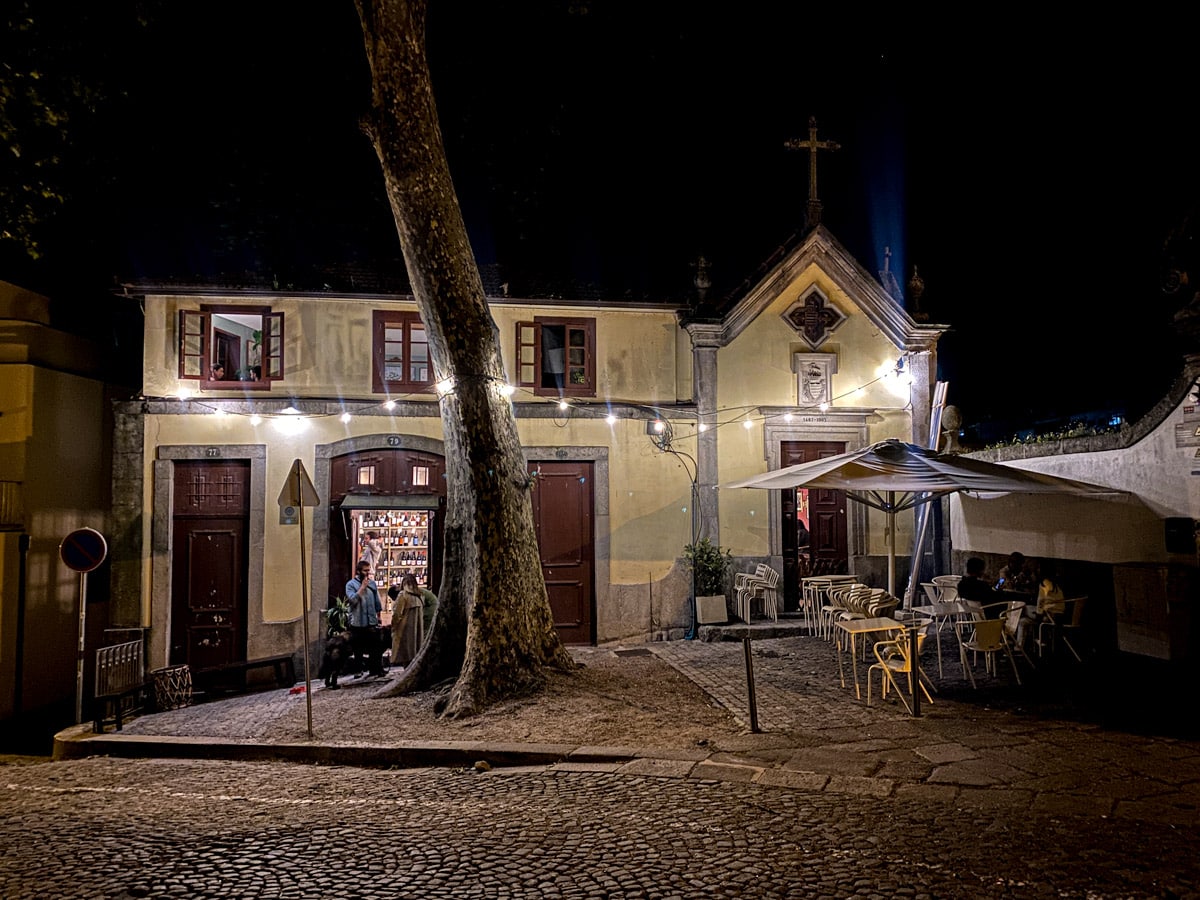
Porto’s traditional Cervejarias and modern craft beer breweries
When it comes to drinking beer in Porto, you’ll find plenty of Cervejarias across the city. While these most directly translate into something like ‘beer bars’, these are actually often affordable places to both eat and drink beer, and in Porto, that often means seafood snacks, seasonal snails, or the aforementioned Franchesina sandwich.
That doesn’t mean you should confuse these low-cost and typically local-looking places with poor cooking; often, you’ll find some of the best food, including shellfish, in these tucked-away spots, while some, such as well respected Cervejaria Gazela, focus more on beer and cheap snacks such as cachorrinhos, Porto’s speciality hot dogs which are served inside a toasted and slightly spicy baguette. For an even more typical hot dog, ask for it with alheira, a traditional Portuguese sausage made from bread and meat – though it’s arguably better on its own, served flaming tableside.
If you’re after a more exciting pint or to at least try the local brew scene, you’re also in good hands. There has been an explosion of great breweries and bars across the city in recent years, with places such as central and sleek Fabrica Nortada, the leafy beer garden at Letraria, and the intimate Colossus Craft Brewery – which also offers tours – being some of my top recommendations.
Another bar that I absolutely adore, although it’s better for wine than beer, is Capela Incomum, housed inside a small converted chapel. It’s not big, and often getting a table is hard, although, in the summer, there are a few more seats on the street outside. If you want to go hard for the night, then the lively bars and late-night clubs on the streets near Clerigos are the places to be.

Museums worth a munch: WOW Cultural Complex in Porto
Of course, eating your way through this Porto food guide is the best way to discover the flavours and tastes of the city, but if you’d like to take a deeper dive into Portugal’s wine industry, then there are plenty of museums which will happily oblige.
Most of these are focused around WOW – World of Wine, a vast new cultural district that raised a few eyebrows when it was built in Gaia, redesigning the landscape in the process. Thankfully, it was built in a respectable way – well, as much as possible – using traditional material and stone alongside the huge glass windows that allow for excellent views.
Inside, there are more than a handful of museums, and with the entrance fees being quite high for Portugal, they quickly add up. A cork museum will tell you everything you want to know – and even more that you don’t – about this important industry which is one of Portugal’s most prominent. Then there is The Bridge Collection, which houses the owner’s impressive personal collection of glassware from various periods and countries, and The Pink Palace, which is a whimsical dive into rosé wine, perhaps more about the photoshoots than anything else.
But the best value and most informative of all the WOW museums I’ve visited, and one I highly recommend, is The Wine Experience, which gives plenty of information on the history and types of wine from across the world, including a deep dive into all of Portugal’s major wine regions in rooms built to reflect the provincial culture. The museum concludes with an informative tasting of wines and an aroma room, ending the experience on a high.

Not just a place for learning, the WOW complex also houses a number of bars and restaurants, all with magnificent views of Porto’s Ribeira across the river. Mira Mira by Ricardo Costa was the standout for me, and having also eaten at his two Michelin Star restaurants in the hotel above, I found it real value for money, given you got similar levels of dishes and vistas from this new opening. If you want to learn more about Portuguese wines and the industry in general, there is also a wine school here offering WSET training and a one-off tasting experience.
There’s also the Museu do Vinho do Porto. However, it’s had a bit of a downgrade and is now more of an exhibition – one that lacks English information. So, to really get to the source of the Douro’s wine history, you’ll want to head upstream to the Douro Museum in Peso da Régua.
Inside this heritage building, you’ll be guided through all things wine, Port and demarcation – one of the pillars which mark the world’s oldest demarcated wine region stands proudly at the museum’s entrance. It’s an excellent introduction to the region’s grapes and stories right in the heart of the UNESCO-listed region, and you can pre-book a well-informed tasting in the upstairs sampling room. Still, the museum is far from the only reason to tear yourself away from Porto’s food scene.
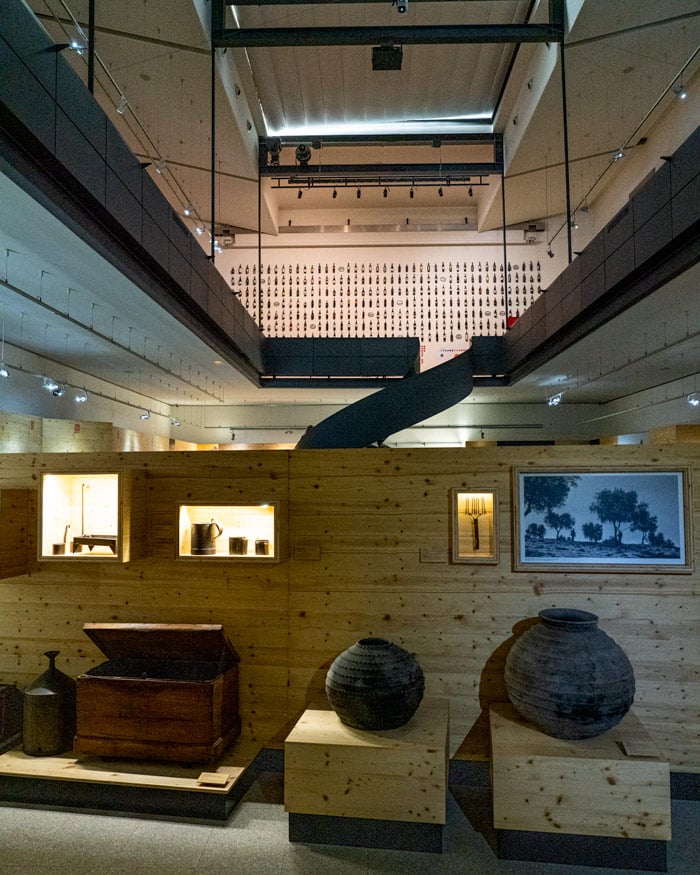
Upriver vines: Food and drink in the Douro Valley
The rest of the Douro Valley deserves equally as much attention, and while it’s very popular to take a day trip from Porto to the Douro Valley either by boat, train or car, I’d actually urge you to spend a night or two staying up here. Not only are hotels such as Quinta do Ventozelo dreamy places to spend a few days amongst the UNESCO-lister vineyards, but sleeping here will allow you to enjoy some of the dining experiences along the river.
I’ve written more in-depth about how to visit and what to do in the Douro Valley before, but there are food experiences in Porto & The Douro that I’d really recommended, as well as visiting the Douro Museum in Peso da Régua.
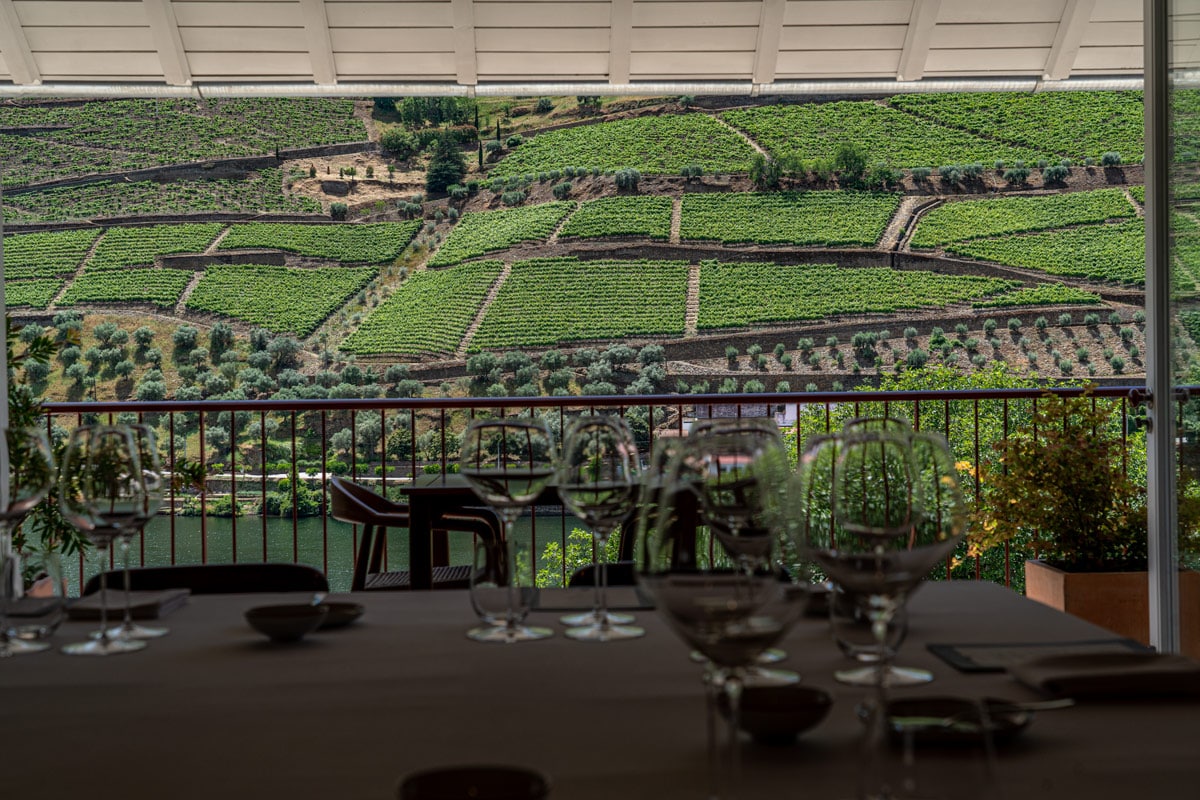
Acclaimed restaurants in the Douro Valley
In terms of restaurants, you are really spoilt for choice here, especially if you want the chance to dine at a (often more affordable) sister restaurant to one of the Michelin-awarded choices in Porto.
Pedro Lemos is the executive chef at Bomfim 1986 in Pinhão, which is housed on the Symington family’s vineyard and Port estate. Inside this modern and breezy space, you’ll find an open kitchen where the team crafts some fantastic plates making use of a traditional wooden oven and ingredients from nearby. You can also enjoy tours of the wine estate, a second restaurant, and even boutique picnics to enjoy amongst the vines.
Rui Paula also has a second offering here, DOC, which is a gorgeous and modern glass-fronted restaurant which, in part, literally floats on the Douro River near Folgosa. Likewise, Vasco Coelho Santos is the mastermind of the menus at Seixo, further upstream, and set on the Sandeman estate.
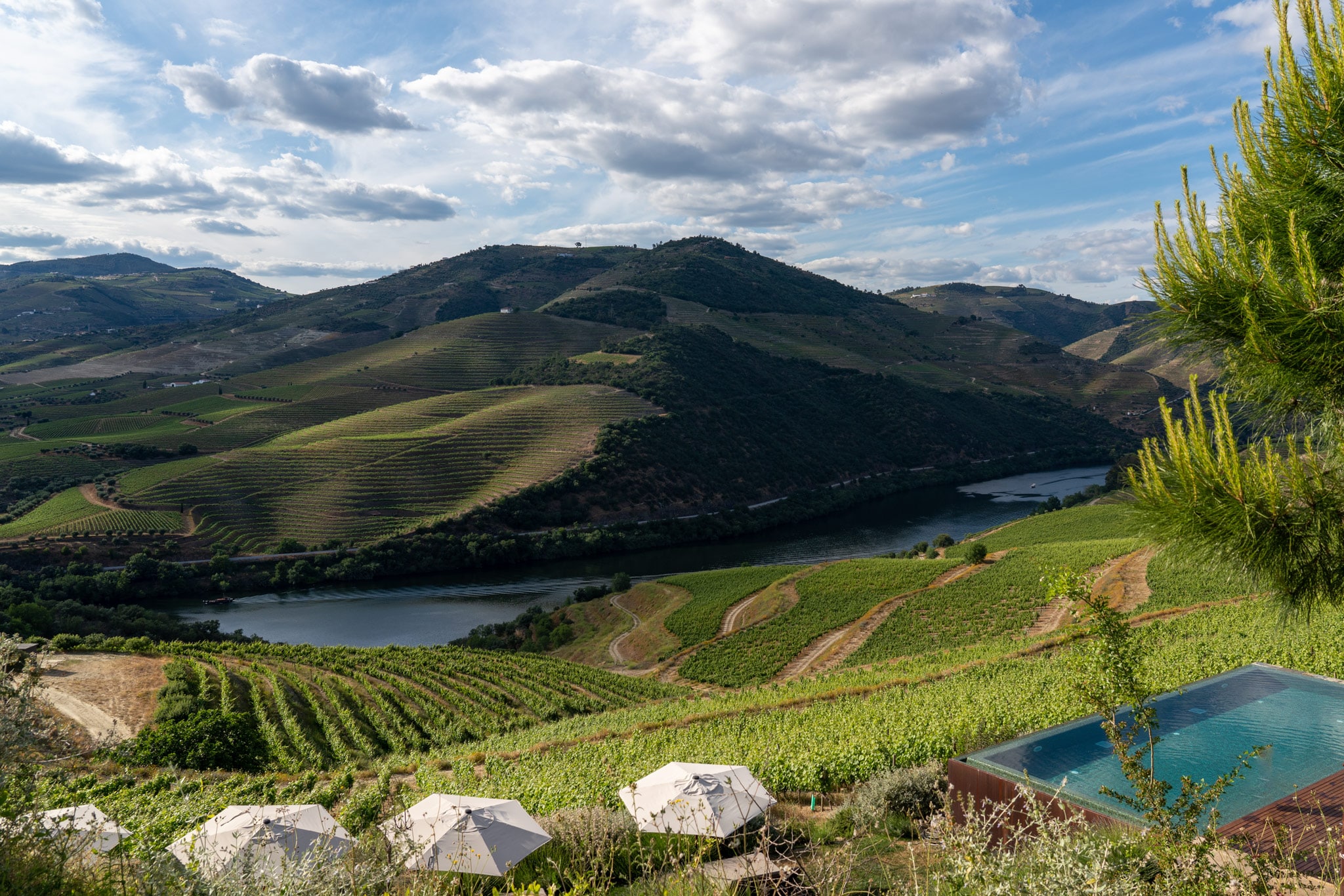
Wine tastings in the Douro Valley
Beyond the food, there are plenty of Douro vineyard tours, tastings and experiences you can book, with many of the wine producers here offering either pre-bookable tours or turn-up and sample sessions. With a variety of local grapes and some world-class table wines on offer alongside the more famous Ports, you’ll want to leave room in your suitcase to bring some bottles back from the source. Come in (usually) late August, September and early October, and you’ll also be able to see the harvest in full swing.
Some of the cruises up the river also include lunches with wine pairings, although when I did one, I found it rather time restrictive of how long you can spend in the valley or at restaurants, hence why I prefer taking the scenic train out from Porto as you don’t need a designated driver.
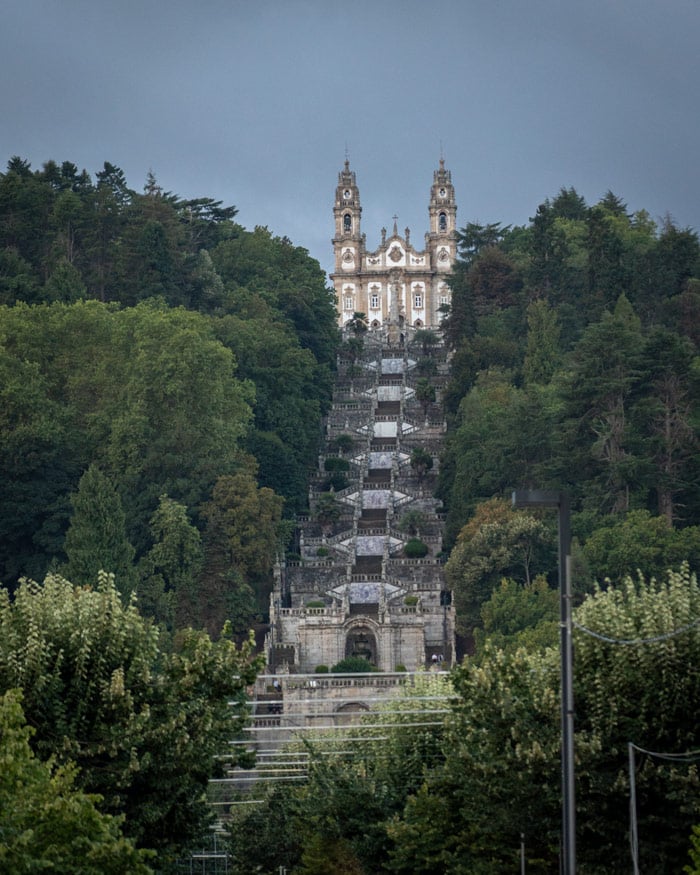
Eating offbeat: Where and what to eat beyond Porto
By now, you’re likely fully committed to your epicurean adventure through Portugal’s much less visited quarters. Luckily, a little delicious detour south will bring you to some more of the country’s best eats.
Call into Lamego, only a short drive from the Douro, to sample the city’s famed presunto, a dry-cured ham that enjoys elevated status among locals. To burn off any extra calories, climb the countless steps up to the 18th-century Santuário de Nossa Senhora dos Remédios which sits high above the city.
Next up, you’ll reach the Dåo wine region, where excellent quality wines and laid-back hosts will shower you with first-class tastings, usually at a much more palatable price than those in the more famous Douro Valley.
And a third and final suggestion on this food guide to Porto – which, admittedly, is starting to venture quite far from the city – is the sublime and stylish Mesa de Lemos by Chef Diogo Rocha. One of the only restaurants in Portugal to not just have a Michelin star but also a Green Michelin star, you can expect a fantastic tasting menu which has a sustainable approach. This is a chef who doesn’t like waste and finds creative and tasty ways to minimise it – a fascinating approach I got to witness first-hand at a pop-up event in Quinta do Ventozelo.
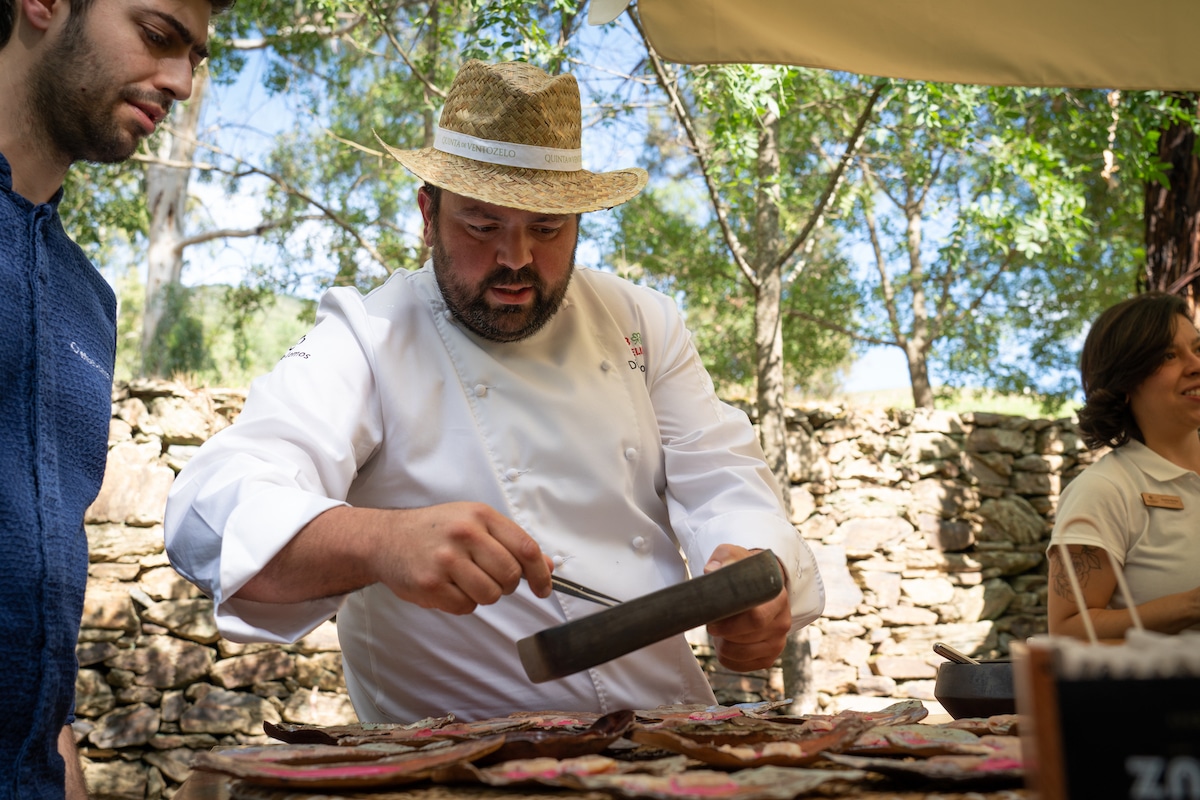
No matter where or how you decide to eat your way through Northern Portugal, I hope this Porto food guide has you prepared for all the unforgettable plates that await. And perhaps, with Michelin launching their new, dedicated Portugal guide early next year, the country will finally receive the first long-awaited Three Michelin Star designation – the bets are on as to which of Portugal’s finest chefs will be the first bestowed with the honour.

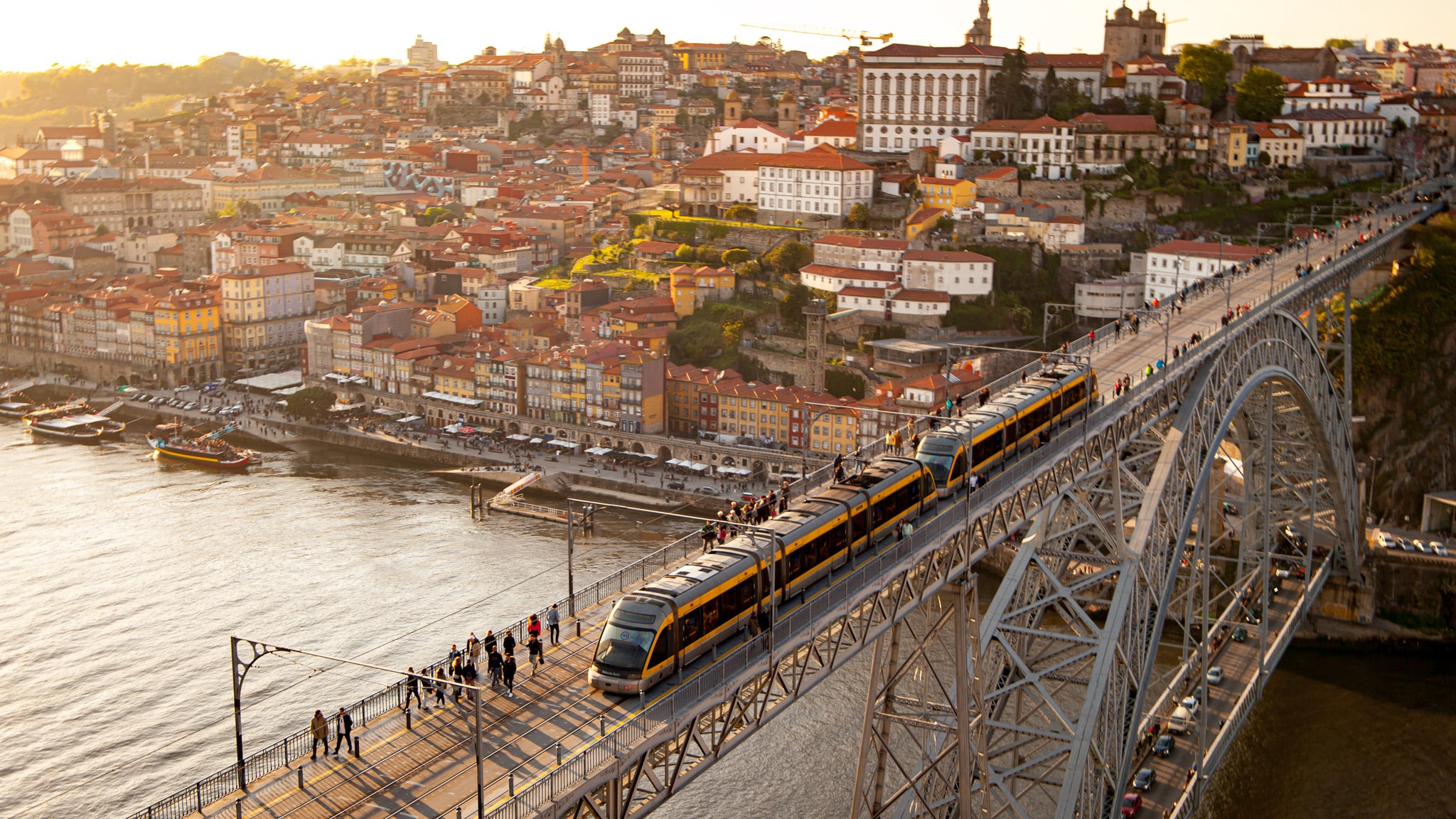



Leave a Reply
Want to join the discussion?Feel free to contribute!